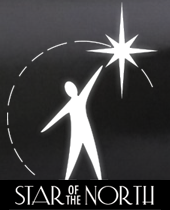HOMILY LENT WEEK 05 02 – Year I
(Nm 21:4-9; Ps 102; Jn 8:21-30)
****************************************
Ordinarily, liturgists try to find a first reading that connects with the gospel for the day.
That connection today is very clear and invites us to put our total faith in Jesus, to turn to him for new life.
The first reading from Numbers is the familiar story of serpents biting and killing the Israelites in the desert. They complain to Moses, who prays to God and asks God to take away the serpents. Interestingly, God does not take away the serpents. Instead, God instructs Moses to make a bronze serpent, put it on a standard, have the people look at it, and they will live.
That bronze serpent raised up on a standard in the desert had no poison in it. It was a bold yet subtle prefiguring of Jesus who has no sin in him, no addiction in him, and who would also be raised up on a standard. God was preparing God’s people, almost subconsciously, to look forward to a figure raised on a cross who would save them, liberate them and give them new life.
Although the Internet suggests that our present-day medical alert symbol of a serpent on a standard comes from Greek mythology, I would suspect that this passage may also have played a part in that development.
The connection between the readings becomes very clear in the discussion between the resistant and misunderstanding Jewish religious authorities, and Jesus about his identity. They did not understand his relationship with the Father at all, so Jesus had to tell them plainly, “When you have lifted up the Son of Man, then you will realize that I am he” and that he is one with the Father.
That incident in the desert should have prepared them for what the Messiah would look like, not a desired triumphant political liberator, but a suffering servant and sacrificial victim. Jesus’ Crucifixion was not to appease an angry God, but the opening up of the divine heart so that we could see that no sin of ours could finally separate us from the love of God. How fortunate we are to have been given the gift of faith in Jesus as Lord, Savior and Messiah, the Lamb of God who truly takes away the sin of the world and can give us eternal life through faith in him and love for one another.
A pastor in Edmonton showed me a video, during the Lenten Mission in his parish, of a Muslim Imam who amazingly became a Christian through his study of the Quran. At one point he realized that no one could answer the question, “Who is Jesus?” Was he either created or the creator? He began to wonder and read through the Quran again. He discovered that the Quran mentioned Jesus much more often than Mohammed, and held Jesus in a much higher light than Mohammed. He found that in the face of all obstacles and even threats to his life, he had to become a Christian and is now an outspoken witness to Jesus. He has put his faith in Jesus and turned to him for new life.
The Eucharist is itself an act of turning to Jesus in faith, to hear his Word and to receive his Body and Blood. Our communion with him in turn transforms us into the Body of Christ sent into the world to proclaim this Good News.
So, as we celebrate today, let us pray for an even stronger faith in Jesus as Lord, Savior and Messiah, Son of God and Son of Man, who alone can give us eternal life.
WORD AMONG US
When you lift up the Son of Man, then you will realize that I Am (Jn 8:28)
When Moses lifted up the bronze serpent, the people who gazed on it saw two things: First, they got a graphic look at their own sins. Gambling, blaming, and complaining are as deadly as serpents. They slither their way between people and interfere with God’s ability to take care of them. Second, they got a look at God’s mercy. Whoever looked at the bronze serpent was instantly healed.
In the same way, when we gaze at Jesus lifted up on the cross, we see ourselves and Jesus more clearly. Looking at the cross, we can see ourselves as capable of wounding people by our indifference, our selfishness, and our pride. We see that we can be like Pilate as we wash our hands of responsibility for the need. We are the soldiers mistreating the people we don’t respect. We are the mob, easily swayed by the fad or feeling of the moment, rejecting anyone who seems out of step. We are the would-be followers running away at the first sign of trouble. We are the faithful friends, helpless and disconsolate, immobilized by fear. We see how our own actions have caused the pain that Jesus is experiencing as he hangs on the cross, suffering for our sins.
But that’s not all. Gazing at the cross, we also see a God who became man because he loves us. We see Jesus looking at each of us with great tenderness and compassion. We hear him promising forgiveness and eternal life to anyone who turns to him in repentance. We see a Messiah who loves us unconditionally, who loves us enough to endure and conquer not only our sins but death itself.
Spend some time in front of a crucifix today, either at home or in church. Don’t worry about whether you have anything to say to Jesus. Just kneel there, and gaze at him in wonder and gratitude. Have the courage to look at whatever he reveals about yourself, but don’t stop there. Keep on gazing until you feel his love driving out your sins and bringing you into his presence, your brother and Redeemer.
Thank you Lord, for loving me enough to be lifted up on the cross.
Friends, in today’s Gospel, Jesus prophesies his Crucifixion and his Father’s role in his coming death. What enabled the first Christians to hold up the cross, to sing its praises, to wear it as a decoration is the fact that God raised up and ratified precisely this crucified Jesus. “You killed him, but God raised him up.” Therefore, God was involved in this terrible thing; God was there, working out his salvific purposes.
But what does this mean? There have been numerous attempts throughout the Christian centuries to name the salvific nature of the cross. Let me offer just one take on it. It became clear to the first Christians that somehow, on that terrible cross, sin had been dealt with. The curse of sin had been removed, taken care of. On that terrible cross, Jesus functioned as the “Lamb of God,” sacrificed for sin.
Does this mean God the Father is a cruel taskmaster demanding a bloody sacrifice so that his anger might be appeased? No, Jesus’ Crucifixion was the opening up of the divine heart so that we could see that no sin of ours could finally separate us from the love of God.
Friends, in today’s Gospel, Jesus predicts his death on the cross.
We are meant to see on that cross not simply a violent display but rather our own ugliness. What brought Jesus to the cross? Stupidity, anger, mistrust, institutional injustice, betrayal of a friend, denial, unspeakable cruelty, scapegoating, fear, etc. In other words, all of our dysfunction is revealed on that cross.
So far so awful. But we can’t stop telling the story at this point. Dante and every other spiritual master know that the only way up is down. When we live in convenient darkness, unaware of our sins, we will never make spiritual progress. So we need the light, however painful it is. But then we can begin to rise.
On the cross of Jesus, we meet our own sin. But we also meet the divine mercy that has taken that sin upon himself in order to swallow it up. We have found, in that cross, the way up. We want to hold up this thing that was considered too horrible to look at. We want to embrace and kiss the very source of our pain.
PREACHED
“When you have lifted up the son of man, then you will realize that I am he, and that I do nothing on my own”
Liturgy invites us to have faith in Jesus, to repent and to do his will, to love.
Bronze serpent: Mt Nebo visit; incident, bronze serpent, see our own sins, Prefigures Jesus
Jesus as Son of Man: Struggle with religious leaders’ disbelief; Jesus one with the Father, He did what pleases the Father
Message for us: Faith and trust in Jesus; be one with him, Do God’s will as he did
Muslim Imam who amazingly became a Christian through his study of the Quran. No one could answer the question, “Who is Jesus?” Was he either created or the creator? He began to wonder and read through the Quran again. He discovered that the Quran mentioned Jesus much more often than Mohammed, and held Jesus in a much higher light than Mohammed. He found that in the face of all obstacles and even threats to his life, he had to become a Christian and is now an outspoken witness to Jesus. He has put his faith in Jesus and turned to him for new life.
Eucharist – encounter with Jesus
So: believe, repent and do his will, love



